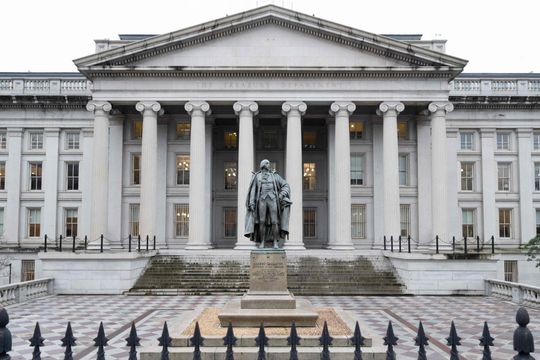The bond market is flashing a warning that U.S. stocks could be headed for a sustained selloff as investors revisit their expectations for how far the Federal Reserve will raise its benchmark interest rate and when it might start to come down.
Since Friday, the yield on the 2-year Treasury note has surged by 36.8 basis points as of midday Tuesday in New York, according to Dow Jones Market Data. That’s the largest three-day gain since June 14. Bond yields move inversely to bond prices.
The yield on the 2-year note TMUBMUSD02Y, 4.425% is one of several popular bond-market proxies that reflect expectations for where the Fed’s policy interest rate might be headed.
When the Federal Reserve announced its latest 25 basis point rate hike in the fed funds rate last week, bringing the upper band of its rate target to 4.75%, up from 0.25% a year ago, investors had expected that the central bank would likely deliver one more rise in March, bringing the Fed’s target rate to 5% before moving to cut interest rates later in the year.
But in the days since, those expectations have been thoroughly scrambled.
Investors have pushed back the expected timing of the first rate cut until 2024, which is in line with the projections from the Federal Reserve’s most recent “dot plot” forecast released in December.
“We’ve reassessed the number of hikes and also the end point of the hiking cycle has moved further out,” said Priya Misra, head of global rates strategy at TD Securities, during a phone interview with MarketWatch.
Nicholas Colas, co-founder of DataTrek Research, emphasized the magnitude of the market’s shift in a note to clients published Tuesday.
“Thursday’s closing yield of 4.09 percent implied two Fed Funds rate cuts of 25 basis points apiece from their current 4.50 – 4.75 percent level. Today’s yield of 4.47 percent says the Fed Funds rate we have may be with us for not just months, but years,” Colas said.
The 2-year yield was little-changed at 4.446% Tuesday, off 1 basis point on the day, according to FactSet data. It hit its highest level since late November earlier in the week, according to DJMD.
Tom Essaye, the founder of Sevens Report Research, pointed out that the market no longer seems to be responding to what Fed Chairman Jerome Powell is saying. Instead, it’s responding to the underlying economic data, which are suggesting that the Fed may need to be even more aggressive if it hopes to drive inflation back to its 2% target.
While inflation has been waning for six months, wages are still rising and some on Wall Street are worried that this disinflation, which Powell cited during Wednesday’s press conference, might turn out to be transitory.
“The spike in the 2-year yield tells us the market is now believing the Fed when it has been saying it’s going to raise rates close to or above 5%,” Essaye said. “Notably, it wasn’t Powell’s commentary that got the market to believe that — it was the economic data from Friday, notably the jobs report and ISM Services PMI.”
Friday’s January jobs data took economists and investors by surprise, showing the number of new jobs created rose by 517,000, the biggest gain in six months. That was more than 100% higher than the median forecast put forth by economists polled by the Wall Street Journal.
Additionally, the latest reading from the ISM service sector activity index accelerated by 6 percentage points to 55.2 in January, up from 49.2 in December. This was better than the consensus estimate of 50.4.
The takeaway is this: while reports of layoffs in the technology sector have piled up, the labor market seems to be in good shape. The unemployment rate is at its lowest level since the 1960s, and the latest weekly data showed the number of Americans applying for jobless benefits has declined to the lowest level since April 2022.
“We have gone from expectations of generally dovish policy on Thursday afternoon to quite hawkish just 2 days later.
Fed funds futures, which traders use to place bets on the direction of monetary policy, have also reflected expectations for more rate hikes this year, according to the CME’s FedWatch tool.
U.S. stocks were on track to finish higher on Tuesday following back-to-back losses on Friday and Monday. The Dow Jones Industrial Average DJIA, +0.78% advanced 200 points, or 0.6%, at 34,093. The S&P 500 SPX, +1.29% was up 1.1% at 4,154. The Nasdaq Composite COMP, +1.90% gained 1.5% at 12,060.

